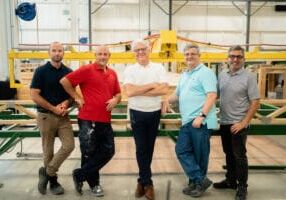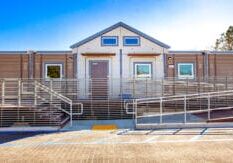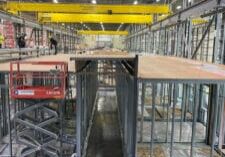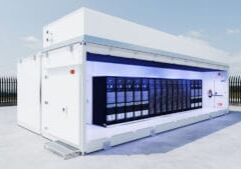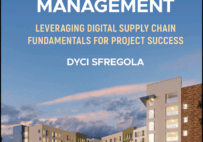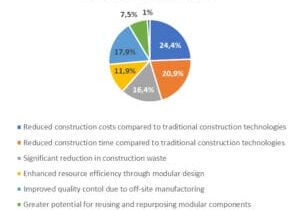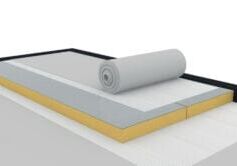El fabricante turco tiene un largo historial de respuesta a catástrofes
El 6 de febrero de 2023, un terremoto de magnitud 7,8 sacudió el sur y el centro de Turquía, causando más de 2.300 muertos y 10.000 heridos. Inmediatamente después, una empresa se puso manos a la obra para proporcionar viviendas provisionales a los damnificados: DORCE Prefabricated Building and Construction. La empresa produce actualmente 320 unidades modulares al día para las labores de socorro y, seis meses después, esas unidades se destinan a las víctimas en forma de viviendas permanentes.
DORCE respondió con la fuerza de su enorme capacidad de producción, dedicando todas sus capacidades a fabricar casas de emergencia para los desplazados por la catástrofe con ayuda de AFAD (Presidencia de la República Turca para la Gestión de Catástrofes y Emergencias). También enviaron equipos como excavadoras y grúas para ayudar en las labores de búsqueda y rescate, redirigieron sus equipos de construcción a la zona y proporcionaron ropa de invierno como abrigos, botas y jerséis. Gracias al personal administrativo de la empresa, sus trabajadores, subcontratistas y proveedores de materiales pudieron responder en este momento crítico.
Su unidad modular actual tiene 21 metros cuadrados e incluye una sala de estar, un dormitorio, una cocina y un aseo con ducha. La construcción especializada de la base y el techo contribuye a la resistencia de la unidad. La chapa trapezoidal protege el interior de las condiciones exteriores, mientras que la base mantiene la unidad estable en el suelo. Las unidades utilizadas para alojamiento temporal pueden desmontarse y enviarse a otros lugares para proporcionar alojamiento a otros proyectos.
Los módulos no sólo son resistentes, sino también ecológicos. Están diseñadas para ser eficientes desde el punto de vista energético y, como están hechas de materiales incombustibles, también son resistentes al fuego. Las unidades se transportan por tierra, ferrocarril o aire, y están diseñadas para ser "plug and play" con los servicios públicos del emplazamiento (actualmente suministrados por AFAD). La construcción de las unidades incluye los sistemas eléctricos, de telecomunicaciones, fontanería y calefacción/refrigeración. Pueden montarse en 24 horas tras su llegada al patio de montaje.
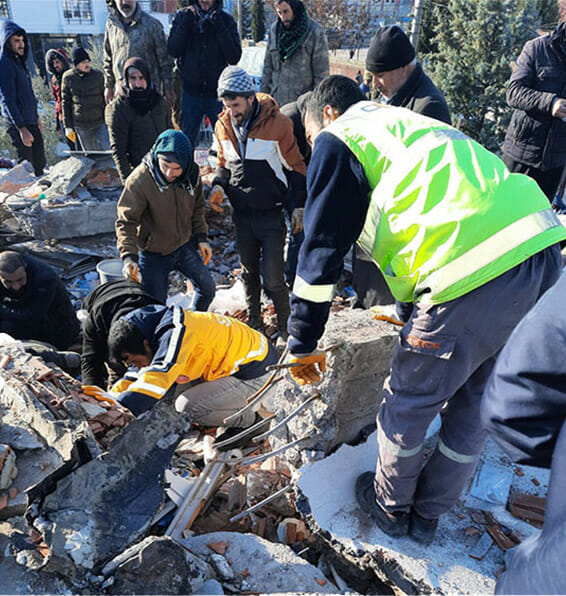
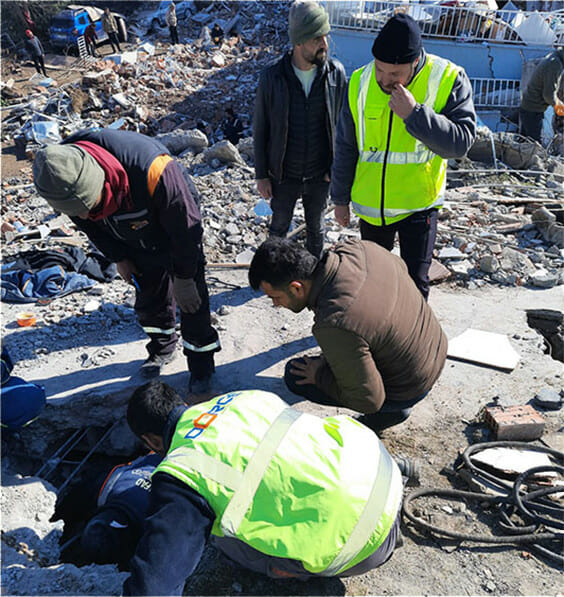
Una historia de respuesta a las emergencias
Repasando la historia de la empresa, este tipo de respuesta es la norma, más que la excepción. DORCE tiene un rico historial de respuesta a catástrofes en la zona, casi desde sus inicios a principios de los años ochenta. Debido a su proximidad a una de las zonas sísmicas más activas del mundo, han invertido mucho tiempo en el diseño y la producción de estructuras modulares antisísmicas.
Geldimurat Annageldiyev, que trabaja para DORCE desde 2003 y es su actual Director General Adjunto responsable de Desarrollo de Negocio Global, afirma que la primera participación de la empresa en misiones de ayuda tras un terremoto se produjo en 1999, cuando un seísmo de magnitud 7,6 sacudió la ciudad de İzmit, en la provincia turca de Kocaeli. En tres meses, la empresa fabricó viviendas modulares para 20.000 personas.
En 2003, respondieron a un terremoto en la ciudad iraní de Bam, proporcionando alojamientos provisionales de emergencia que luego se trasladaron a distintas regiones del país para ser utilizados como residencias de estudiantes.
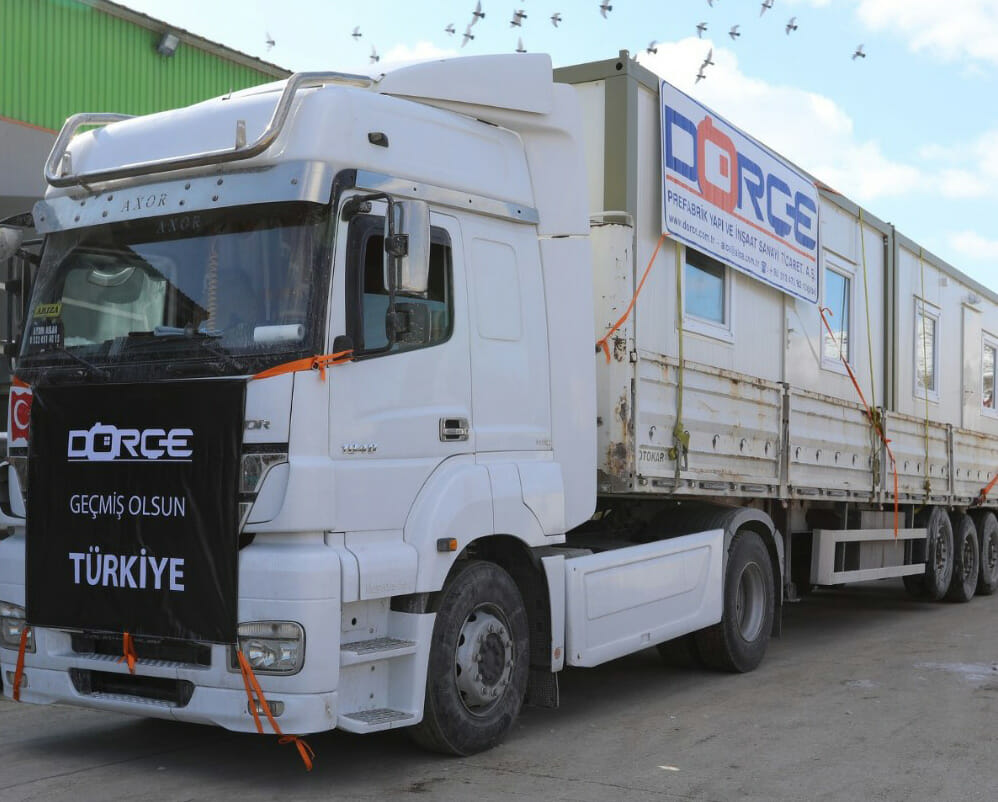
En 2011, se proporcionaron 3.000 módulos durante un periodo de 45 días para alojar a más víctimas en Ercis y Van (Turquía).
El terremoto de 2023 afectó a algunas de las ciudades más densamente pobladas del país: Hatay, Adıyaman, Kahramanmaraş y Malatya. Las personas más afectadas fueron las que vivían en infraviviendas en asentamientos informales. También afectó enormemente a varias industrias del país, como la textil, la automovilística, la tecnológica, la manufacturera y la de la construcción.
El gobierno turco anunció recientemente un nuevo programa de construcción de viviendas para ayudar a los afectados de este año. Consiste en la construcción de 650.000 nuevas viviendas en los próximos cinco años en las zonas afectadas. Todas las viviendas se construirán siguiendo las normas más estrictas de seguridad antisísmica y se ubicarán en zonas más seguras de cada ciudad.
La empresa se ha ganado la reputación de ofrecer una respuesta rápida con un gran volumen de estructuras modulares para acomodar y alojar a personas,
temporal o permanentemente. Con unidades especialmente diseñadas para facilitar su transporte y montaje, se les considera un recurso para respuestas de emergencia en todo el mundo.
Internacional desde el principio
DORCE empezó como fabricante de materiales de construcción de acero de menor importancia, como sillas, puertas, ventanas y muebles. Al cabo de unos dos años, se había ampliado a edificios de acero ligero y contenedores, unidades modulares y estructuras pesadas de acero prediseñadas. A lo largo de su historia, ha realizado proyectos en más de 60 países, todos ellos desde su centro de fabricación de 100.000 metros cuadrados en Ankara (Turquía). Esta planta es una de las mayores del mundo en activo y lleva décadas produciendo 180.000 metros cuadrados de edificios prefabricados o 5.000 unidades modulares al mes sin parar.
La rapidez con la que son capaces de producir estas unidades se debe al uso de modernas tecnologías de la construcción, como el modelado de información de edificios (BIM), los Métodos Modernos de Construcción (MMC), el Diseño para Fabricación y Montaje (DFMA) y el Diseño para Métodos Industrializados de Construcción (DIMC). En concreto, confían en el BIM para aumentar la eficiencia del proceso de construcción, reducir los residuos y mejorar la calidad y la vida útil de las estructuras.
Su objetivo siempre ha sido expandirse internacionalmente, y lo han hecho de una forma única. "Como primer paso para tener éxito en los mercados internacionales, aprendimos a apreciar y respetar la cultura y la actitud de los países en los que trabajamos. Con el tiempo, comprendimos realmente los matices de las distintas culturas, contratando a personas de todo el mundo. Hoy podemos decir con orgullo que más de 20 nacionalidades trabajan en DORCE en todo el mundo", afirma Annageldiyev.
Con la creciente popularidad de la construcción modular, tanto en Turquía como en otros países, los servicios de DORCE están muy solicitados y la empresa quiere ampliar sus operaciones en consecuencia. Ya tienen un historial de trabajo con muchas empresas estadounidenses y canadienses y con el ejército, incluido el ejército estadounidense, y con la OTAN en Irak, Afganistán, Qatar y Somalia. También han suministrado viviendas a empresas mineras, estructuras modulares para embajadas del gobierno estadounidense y un proyecto de viviendas colectivas para distintas empresas con sede en Estados Unidos.
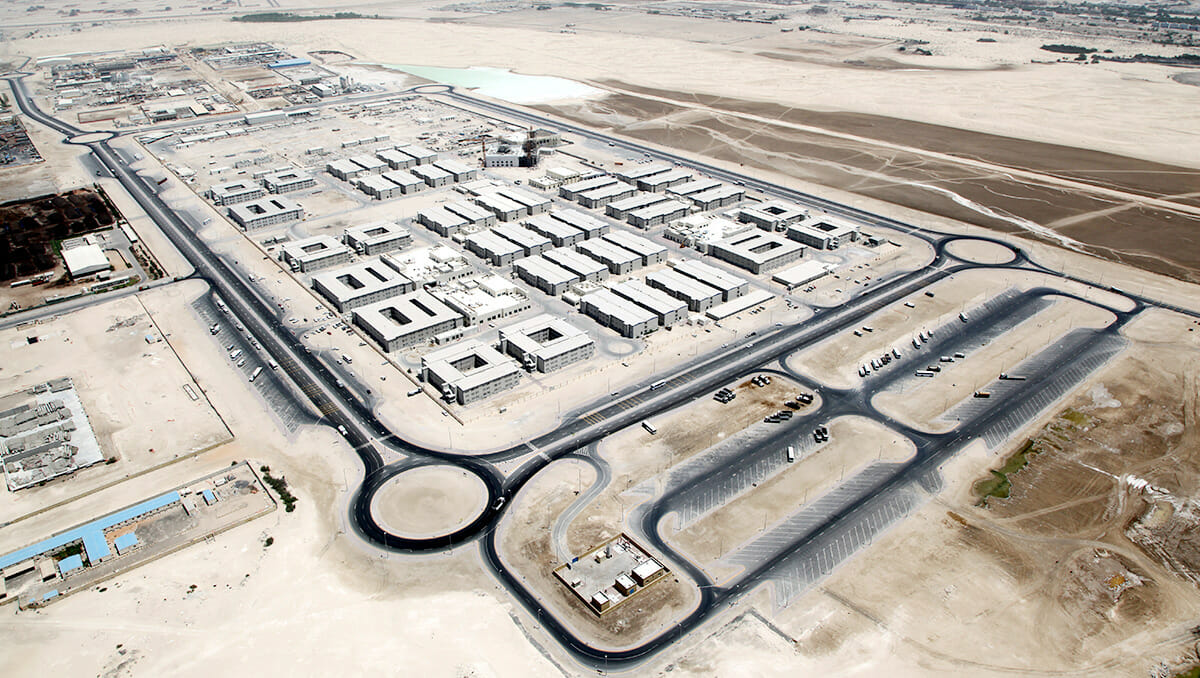
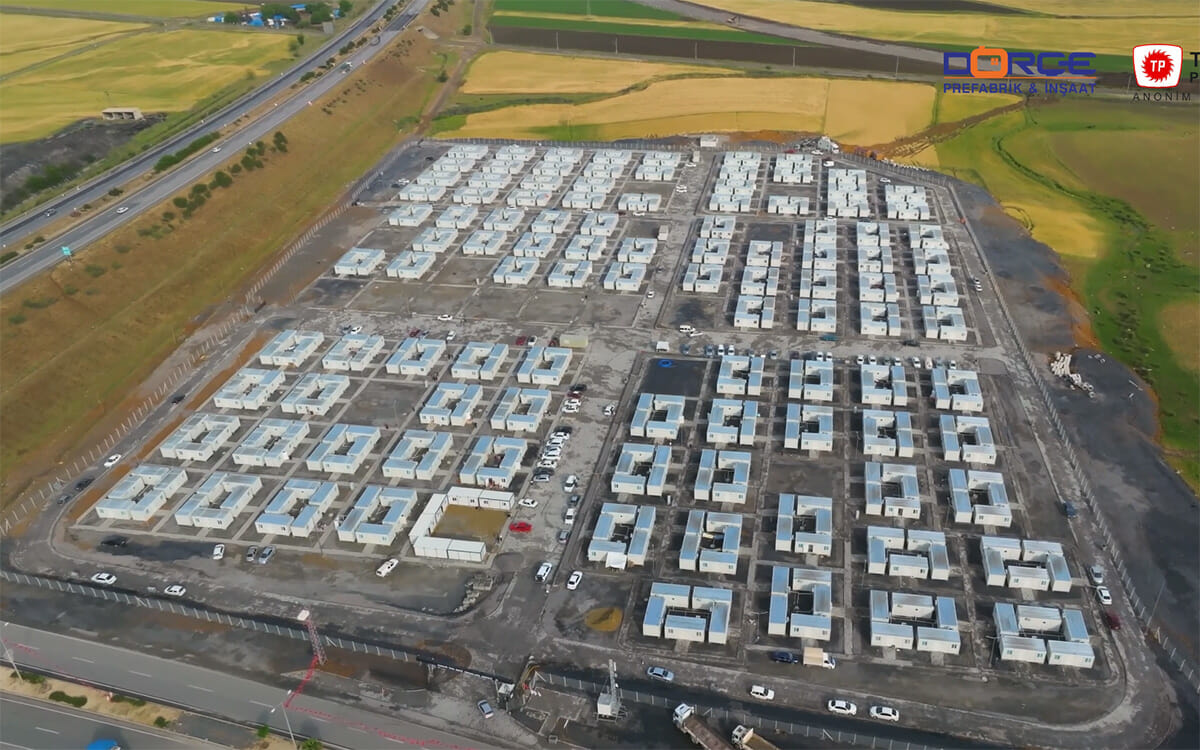
Comunidades de viviendas de emergencia fabricadas por DORCE
Para afianzarse en el mercado estadounidense, pretenden realizar un proyecto volumétrico de gran altura en los próximos 5-10 años.
Annageldiyev cree que es el momento oportuno, citando el aumento de la demanda de viviendas en zonas urbanas, el coste creciente de los métodos de construcción tradicionales, las políticas gubernamentales favorables, la atención prestada a la seguridad y la calidad, y la creciente demanda de edificios modulares volumétricos sostenibles. También ve una gran oportunidad en la construcción de viviendas temporales y permanentes para los sin techo.
Como es lógico, se centran en la producción modular para zonas propensas a terremotos, como California. Su experiencia en este tipo de catástrofes en su propio país les permite aportar una gran experiencia al mercado estadounidense. Ya han realizado importantes inversiones, con planes para abrir fábricas en Estados Unidos y Canadá y crear asociaciones con empresas de esos países.
Sobre la autora: Dawn Killough es una escritora independiente especializada en construcción con más de 25 años de experiencia trabajando con empresas constructoras, subcontratistas y contratistas generales. Su obra publicada se puede encontrar en dkilloughwriter.com.
Más de Modular Advantage
Resia: Romper todas las reglas
Resia Manufacturing, una división de la empresa estadounidense Resia, ofrece ahora componentes prefabricados para baños y cocinas a sus socios industriales. Su planta de fabricación híbrida produce componentes (módulos) de baño y cocina más precisos, más rápidamente y a menor coste que la construcción tradicional. Así es como lo hace Resia Manufacturing.
Cómo innova LINQ Modular para llevar lo modular al mercado de los EAU y más allá
LINQ Modular, con una oficina y tres plantas de fabricación en Dubai, es una empresa modular con sede en Emiratos Árabes Unidos. La empresa tiene una misión: abrir con modulares los mercados de la vivienda y la construcción en la zona del Consejo de Cooperación del Golfo (CCG).
ModMax: redefinir la construcción modular con confianza y precisión
ModMax nació de la frustración ante cinco problemas persistentes en la construcción modular: Cuellos de botella en los permisos. Retrasos en la producción. Diseños rígidos. Desconexión entre "la oficina" y el terreno. Falta de transparencia y comunicación.
LifeArk: Viviendas resistentes a catástrofes con plástico reciclado y tecnología centenaria
Wee compara las viviendas de LifeArk con las neveras Yeti, ya que su construcción es similar. Cada componente tarda entre 15 y 20 minutos en fabricarse, tiene un valor R de 40 e incluye ranuras y canales moldeados para el cableado, la fontanería, los rociadores contra incendios y otros servicios.
Construir el futuro de la infraestructura modular Edge
El mercado de centros de datos periféricos se está expandiendo rápidamente, impulsado por el aumento de las cargas de trabajo de IA, la adopción de IoT y la necesidad de potencia de cálculo localizada. En estos entornos, la sostenibilidad, la escalabilidad y la fiabilidad no son negociables. La refrigeración es uno de los retos más complejos para los operadores y uno de los factores más decisivos para el éxito a largo plazo.
Aceleración de la construcción en acero ligero: Un flujo de trabajo digital semiautomatizado para proyectos a pie de obra
Para los profesionales de la construcción, el mensaje es claro. Adoptando la semiautomatización y la digitalización, las empresas pueden entregar los proyectos con mayor rapidez, precisión y rentabilidad, al tiempo que refuerzan la colaboración entre los equipos. No se trata de sustituir a las personas por máquinas, sino de dotarlas de mejores herramientas y procesos.
Por qué están ganando impulso los centros de datos modulares
La inteligencia artificial, la informática de alto rendimiento y las aplicaciones periféricas superan los límites de los centros de datos tradicionales. Tardan años en construirse, a menudo tienen problemas con las cargas de trabajo de alta densidad y no están optimizados para implementarse cerca de los usuarios finales. Las plataformas de centros de datos modulares están diseñadas para hacer frente a estos retos, ofreciendo flexibilidad y escalabilidad para adaptarse a las tecnologías en evolución, al tiempo que abren nuevas oportunidades para la industria de la construcción modular.
La innovación en la cadena de suministro en acción: 5 hábitos que todo líder modular debe practicar
Aplicando estos principios a las prácticas de la cadena de suministro -planificación colaborativa, compras estratégicas, modelización de escenarios, herramientas digitales y previsiones transparentes-, los líderes de la construcción pueden construir cadenas de valor que no sólo sean eficientes y ágiles, sino verdaderamente innovadoras.
Exploración del papel de la construcción modular integrada (MiC) en la promoción de los principios de la ciudad circular: una encuesta sobre las perspectivas de las partes interesadas
Los resultados de la encuesta destacan el importante potencial de la construcción modular integrada (MiC) para avanzar en el desarrollo de ciudades circulares. Al reducir costes, acelerar los plazos de construcción y minimizar la generación de residuos, la MiC ofrece un enfoque prometedor para el desarrollo urbano sostenible.
El uso de sellantes y adhesivos a base de MS POLYMER™ en la construcción modular
Estos productos combinan flexibilidad y recuperación elástica con una excelente adherencia a distintos sustratos y ya han demostrado su utilidad en la construcción tradicional. Ahora es el momento de ponerlos en práctica en la industria de la construcción modular.



